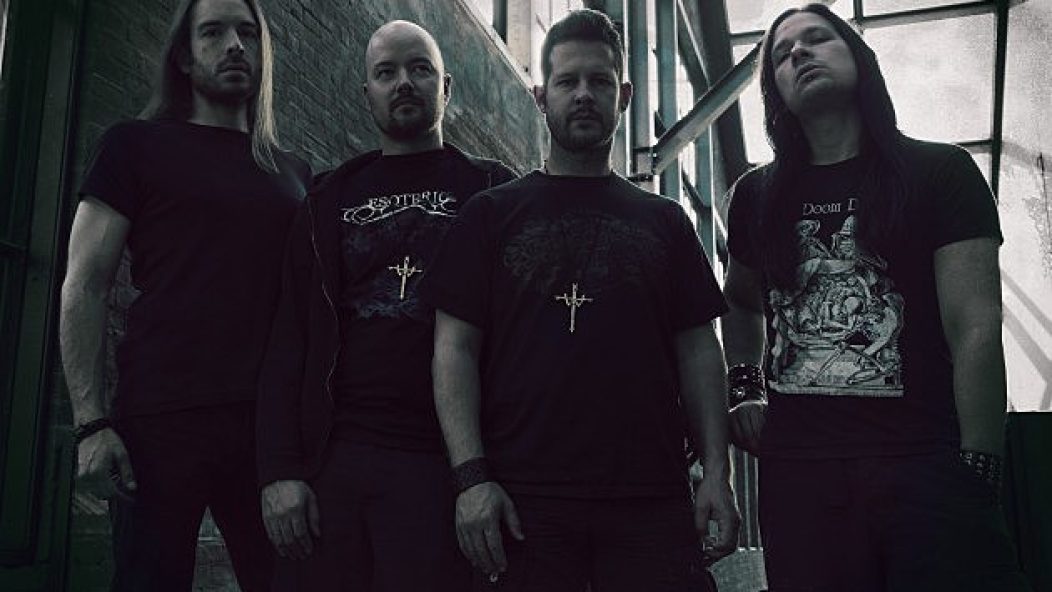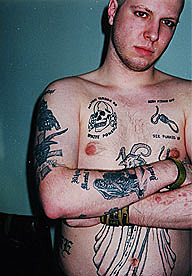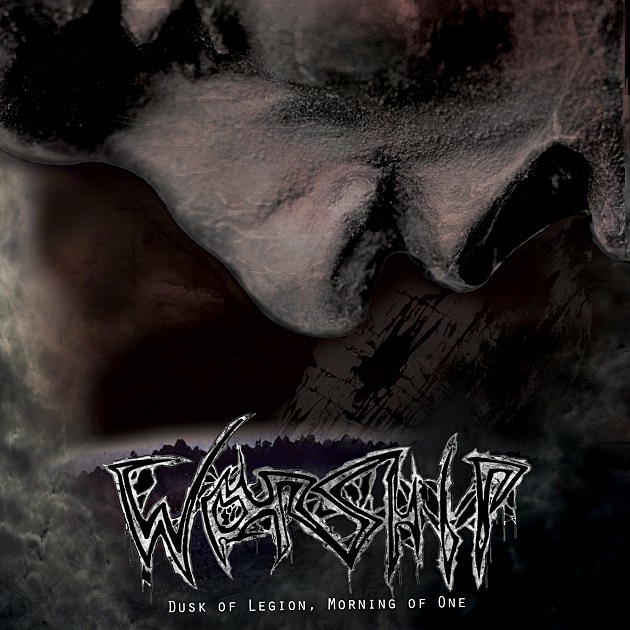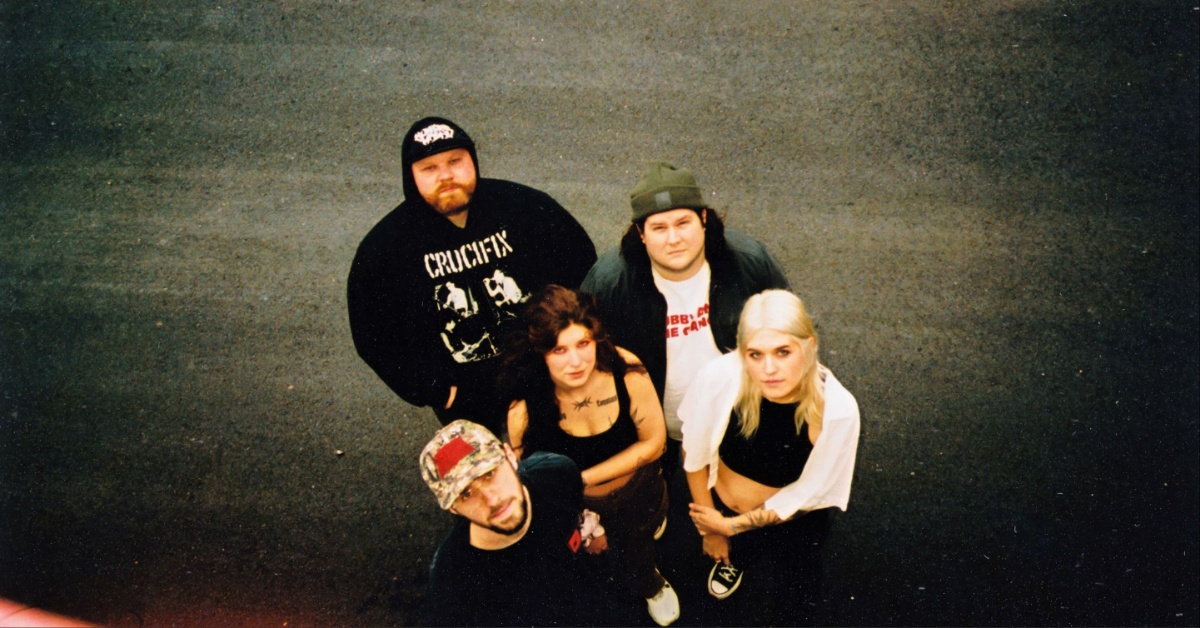
From Despair to Where: Bringing Funeral Doom Stateside with Worship
…
“Really, you like this kind of stuff?”
Claus Legarth seemed surprised by our uncommon common interest in metal. I was impressed that my boss’s fiancee drummed in venerated German act Worship. At the time, I was working at a private school on the North Shore of Long Island, New York. In the land of the Great Gatsby, the topic of doom metal rarely infiltrated conversation. Still, once outed, I admitted, that like many stateside listeners, I was unfamiliar with Worship’s albums.
So I heeded the call. Like countless tape traders and messageboard-combers before me, I excavated for clues. Along the way, the band’s grand arrangements and glacial tempos enveloped me in a slow-motion assault. Worship’s defiantly anti-commercial, uncompromising outlook and sound gradually lodged themselves in my brain. Thick with atmosphere and authentic woe, their music and backstory were hard to take and even harder to shake. I unraveled a tale of death, doom, and rebirth.
Worship began as a collaboration between German guitarist Daniel Pharos (the Doommonger) and Max Varnier (Fucked Up Mad Max), a French drummer/vocalist. The pair crossed paths when Varnier interviewed Pharos for his fanzine Océan Morphique. Their early work became the sought after Last Tape Before Doomsday demo. The rampant id to Pharos’s methodical studio tinkerer, Varnier’s talent for promotion clashed with his desire for underground authenticity. In a recent conversation, Pharos was unguarded about the pair’s inauspicious introduction and contrasting personalities.
…
…
“One day, he just out of nowhere announced he wanted to start a couple of bands. He sent me the list, on it was the idea of a doom band called ‘Worship.’ I showed him my songs, we wrote lyrics together, he growled over the songs. A pretty weird and amateurish way to work, just following our instincts. I brought composition and sadness. He brought the rage, the chaos-powered promotion machine, and the attitude. It was a great explosive bundle.”
Worship’s unusual vocal approach reflected its multinational makeup.
“Max brought French and English lyrics. I added English and German ideas. We blended everything. It felt natural. I discovered my love for growled French vocals and Max growling German with a French accent.”
Despite early split releases with other funeral doom acts, when questioned about the style, Pharos made it clear his band predated that nomenclature.
…

…
“Worship started before there was that sub-genre called ‘funeral doom.’ I was going at it naturally without knowing how it’s supposed to be done. In most ways, I still do. It’s just the way I’m wired. I need to play doom to feel doom. I need to wrestle my inner demons, and get actively lost in the music, on stage, or alone with my guitar.”
My original portal into Worship’s world, Legarth offered further insight into funeral doom’s durability: “It hardly changes because it doesn’t have to. There is no new trend to follow or a new breed of fans to try to make happy. Funeral doom is always right there, where it hurts the most, where you meet your deepest depression and your most painful agony.” For the majority of its existence, Worship resided in that dimly lit corner. Tragedy nearly derailed the band early on.
…
…
Varnier was out of control. The band’s co-founder was, by all reports, an unrepentant nihilist with a genuine passion for metal. On an extended visit to Canada, Varnier shocked friends with an uncharacteristic look that included cropped hair and a bomber jacket.
Increasingly unhinged during these final days, Varnier took his life on June 23, 2001 when he leapt off the High Level Bridge in Edmonton, Alberta. His suicide effectively ended Worship’s first chapter. Like Pink Floyd’s Syd Barrett, Varnier has remained a crucial part of Worship’s story even 15 years after his passing
In 2004 Pharos began the painful process of completing Dooom, the follow-up to the Last Tape Before Doomsday cassette. Remarkably, he was able to salvage some of Varnier’s previously recorded vocal contributions. Critical response to the release confirmed that Worship’s tragic story had indeed earned them some morbid credibility.
“Each and every note struck, each drum hit and each growl is structured for maximum psychological damage – their vocalist committed suicide for fuck sake, and is back on plastic from beyond the grave trying to convince you to do the same.”
– Lars Christiansen -The Metal Crypt
When asked what Worship might have been like had Varnier lived, Pharos spoke appreciatively of his fallen comrade’s unbridled energy. “I would so love to have the crazy guy on tour with us. He was like a Tasmanian devil: explosive self-destructive rage.”
…
It’s October 2, 2015 and tonight Worship plays its first ever US show at the Highline in Seattle. Good news for our city’s metal community and for me personally, as I get a rare opportunity to reconnect with Legarth, who now calls California home. I walk up Broadway to the venue and spot him at the bar, bearded and sporting a massive cross. He greets me warmly. I’ve never seen him outside of civilian attire, and it suits him.
Legarth asserts that their geographic distance from each other actually benefits Worship’s current lineup. “Going on tour is like a family reunion. Usually, I fly to Germany to meet the rest of the band. But on our Japanese tour, we met at Tokyo’s Narita airport. And for the Gloom over the West tour, I was honored to welcome them to my current home country.” He beckons me to the merch table. “Come meet Daniel. He’s the mastermind behind all of this.”
Tonight, Worship’s driving force sits on the bar’s inside windowsill, his hoodie drawn over his eyes. He pulls it back, revealing a shaved head and a youthful countenance that surprises me. I suppose Worship’s considerable reputation and the existential anguish of the lyrics primed me for a grizzled scene veteran. Instead, like Legarth, Pharos radiates German warmth, that unique combination of beerhall camaraderie and charming directness. I appreciate the introduction but quickly duck away to give the band space before they play.
At 11:45 Worship take to the Highline stage and demolishes the place. Slowly. Very. Slowly. With complete commitment and discipline. Outwardly placid, only Pharos’ facial contortions provide evidence of the music’s effect on the band. Guitarist Martin “Satachrist” Tapparo and bassist Dominik “Doomnike” Morgenroth reinforce the minimalist riffs with perfect concentration. In fact the entire performance is a master course in restraint; the players await each pulverizing cue with preternatural patience.
Worship’s moniker is an apt one. I bear witness to the destruction near Dylan Desmond, owner of the Highline, whose own band Bell Witch played a pummeling set earlier. Desmond holds his German guests in high regard. “Worship are pioneers of the genre. I find their work to be among the most powerful and refined of all styles of doom.”
I float out of the Highline and into the late night Seattle drizzle, still bathing in misery’s depths, courtesy of Worship.
…

…
Thus far, 2016 hasn’t been easy for the band. Pharos is open about recent struggles with depression and the resulting delays plaguing Worship’s new album Dusk of Legion Morning of One. “Usually, I was able to feel elements of depression – quite new in my life – and use my music to fight or change them. Worship was my number one remedy. This time, mood disorder stuff actually got in the way, making work on the album hard to impossible for some time. That was a first, and I would rather not experience that again, thank you very much.”
Most recently the band had to cancel a European tour with Mexico’s Majestic Downfall with little notice. Still, despite the setbacks, Legarth confirms the album will reflect more of Worship’s live sound. “Through all the touring, we have been growing more and more into an organic band. It’s still Daniel writing the music and lyrics and playing guitar and singing, but there is more musical consensus and intuition now.”
Like the other members of Worship, Pharos maintains a non-metal day job. “I am a full-time composer, so I have to be fluent in a lot of styles of music.” Similarly, outside the band, the members indulge their eclectic musical interests. “Psytrance can be great, especially at clubs and festivals. Claus pretty much infected most of us.” Still, doom is always there, waiting patiently in the dark. “Sad, dark and atmospheric was always my number one, though, and will always be.”
Of Worship’s devout fanbase, Pharos is audibly grateful. “At almost every gig, there are a few people with individual stories concerning their connection to our band, often humbling and inspiring. I don’t want to share what they say. It’s often quite personal.”
So there it is. Over a decade and a half in, Worship’s brutal honesty and crushing beauty continue to inspire fan devotion. Pharos and the band conjure a barren emotional landscape, one that both soothes and provokes visitors. Worship are that rare act that combine the grisly with the graceful. There is no way to passively engage with their music; it demands that we slow down and succumb to its torrent. For sheer obstinence in the face of calamity, Worship earn our praise.
…










